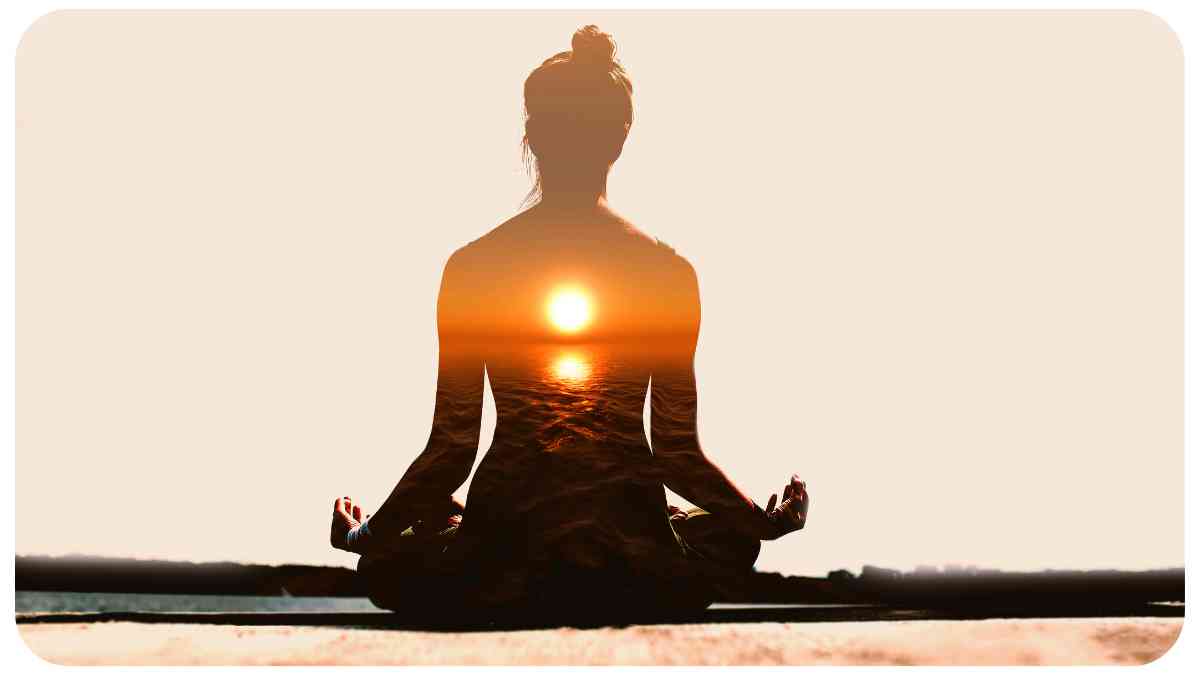Welcome to an exploration of the ancient and profound practice of Yoga. In this article, we will delve into the origins of Yoga, its evolution over time, its various styles, and the numerous benefits it offers. Join me on this journey through centuries of rich history, as we uncover the timeless wisdom and transformative power of Yoga.
| Key Points |
|---|
| Yoga has ancient roots and a rich history that can be explored through various resources. |
| Understanding the history of Yoga can enhance the appreciation and practice of this ancient discipline. |
| Yoga is a practice that is accessible to people of all ages, fitness levels, and body types. |
| By incorporating Yoga into your routine, you can experience improved flexibility, strength, and overall well-being. |
| Breathing techniques and meditation play an integral role in the practice of Yoga, promoting relaxation and mindfulness. |
| Attending Yoga retreats and workshops can deepen your practice and provide opportunities for transformation and growth. |
| Additional reading and resources are available to expand your knowledge and understanding of Yoga’s history and practices. |
The Ancient Beginnings of Yoga
To truly understand Yoga, we must travel back in time to ancient civilizations that laid the foundations for this holistic practice. Archaeological evidence suggests that Yoga dates back over 5,000 years to the Indus Valley Civilization in present-day India.
The word “Yoga” is derived from the Sanskrit root “yuj,” meaning to unite or join. Yoga, therefore, represents the harmony between mind, body, and spirit.
Table: Ancient Civilizations Practicing Yoga
| Civilization | Time Period | Notable Contributions |
| Indus Valley | 3300 BCE – 1300 BCE | Earliest evidence of Yoga-like practices |
| Vedic Period | 1500 BCE – 500 BCE | Upanishads enriched the philosophical aspects of Yoga |
| Classical Period | 500 BCE – 500 CE | Sage Patanjali’s Yoga Sutras formalized the practice and defined the Eight Limbs of Yoga |
| Post-Classical | 500 CE – 1800 CE | Bhakti Yoga, Karma Yoga, and Hatha Yoga gained prominence |
| Modern Period | 1800 CE – Present | Yoga masters like Swami Vivekananda and B.K.S. Iyengar introduced Yoga to the Western world and popularized it |
The Eight Limbs of Yoga
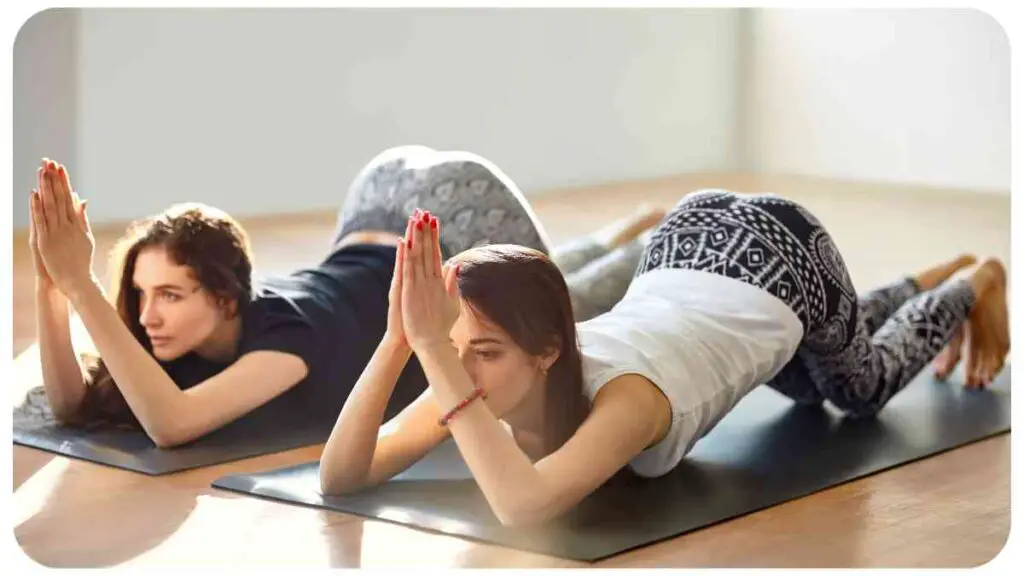
One of the central philosophical texts of Yoga is the Yoga Sutras of Patanjali, which outlines the Eight Limbs of Yoga. Each limb represents a part of the holistic practice, guiding practitioners towards self-realization and spiritual growth.
To attain ultimate enlightenment, ancient yoga practices hold the key. Discover and unleash the secrets of ancient yoga practices for spiritual growth and self-realization.
Table: The Eight Limbs of Yoga
| Limb | Description |
| Yama | Moral and ethical principles guiding one’s behavior towards others |
| Niyama | Personal observances related to self-discipline and inner purification |
| Asana | Physical postures aimed at cultivating strength, flexibility, and balance |
| Pranayama | Breath control techniques to enhance vitality and deepen the connection between the body and mind |
| Pratyahara | Withdrawal of the senses from external distractions, enabling one to turn inward and self-reflect |
| Dharana | Concentration practices to focus the mind and cultivate mental clarity |
| Dhyana | Meditation techniques leading to a state of deep contemplation and spiritual absorption |
| Samadhi | The ultimate goal of Yoga – a state of oneness and union with the universal consciousness, where the self dissolves and transcends into pure existence, bliss, and knowledge |
Yoga in Ancient India
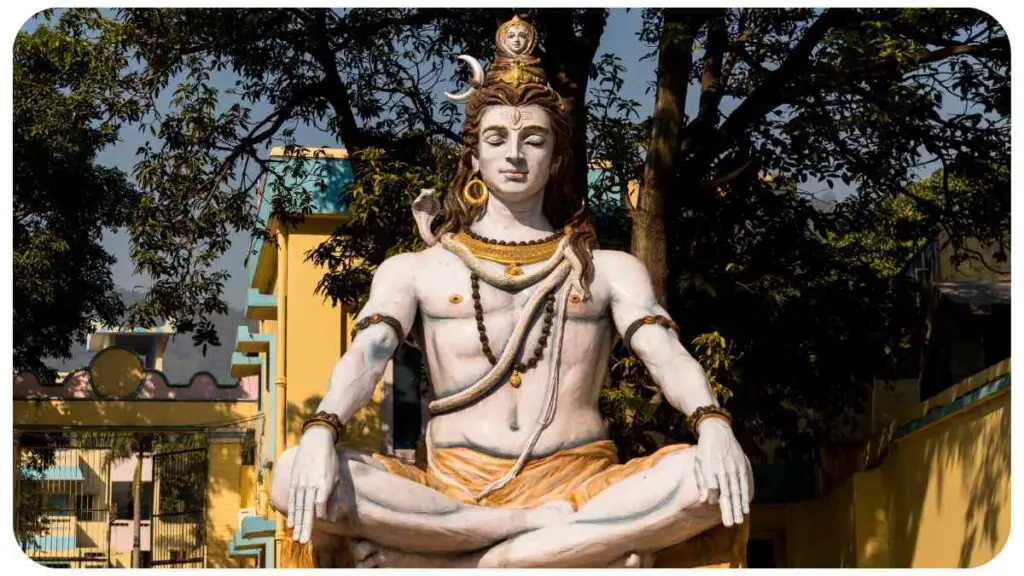
Yoga was deeply intertwined with ancient Indian culture, philosophy, and spirituality. It found expression in various forms, including Bhakti Yoga (the path of devotion),
Karma Yoga (the path of selfless action), Jnana Yoga (the path of knowledge), and Hatha Yoga (the path of physical postures and breath control). These diverse paths enabled individuals to choose the approach that resonated most with their spiritual journey.
Building a strong spiritual connection through yoga is essential for a fulfilling practice. Dive deeper into the deeper meaning of your yoga practice and unlock its transformative power.
Table: Major Yogic Texts in Ancient India
| Text | Author | Description |
| Rigveda | Sage Vyasa | Contains hymns dedicated to the gods and mentions the practice of Yoga |
| Upanishads | Various Scholars | Explores the profound concepts of Yoga, such as the nature of the self, the universe, and the ultimate reality |
| Bhagavad Gita | Vyasa | Lord Krishna imparts spiritual wisdom to Arjuna, emphasizing the significance of selfless action and the importance of finding balance in life |
Yoga in Modern Times
As Yoga traveled through time, it underwent significant transformations and adaptations. In the late 18th century, Yoga masters like Swami Vivekananda and Paramahansa Yogananda played instrumental roles in bringing Yoga to the Western world. Their teachings sparked interest and curiosity, paving the way for the popularity of Yoga we witness today.
Table: Modern Yoga Masters Who Influenced the West
| Yoga Master | Contributions |
| Swami Vivekananda | Introduced Yoga at the World Parliament of Religions in 1893, emphasizing its universal principles and philosophy |
| Paramahansa Yogananda | Authored “Autobiography of a Yogi” in 1946, a spiritual classic that introduced Yoga to a wider audience and kindled interest in Eastern spirituality |
Different Styles of Yoga
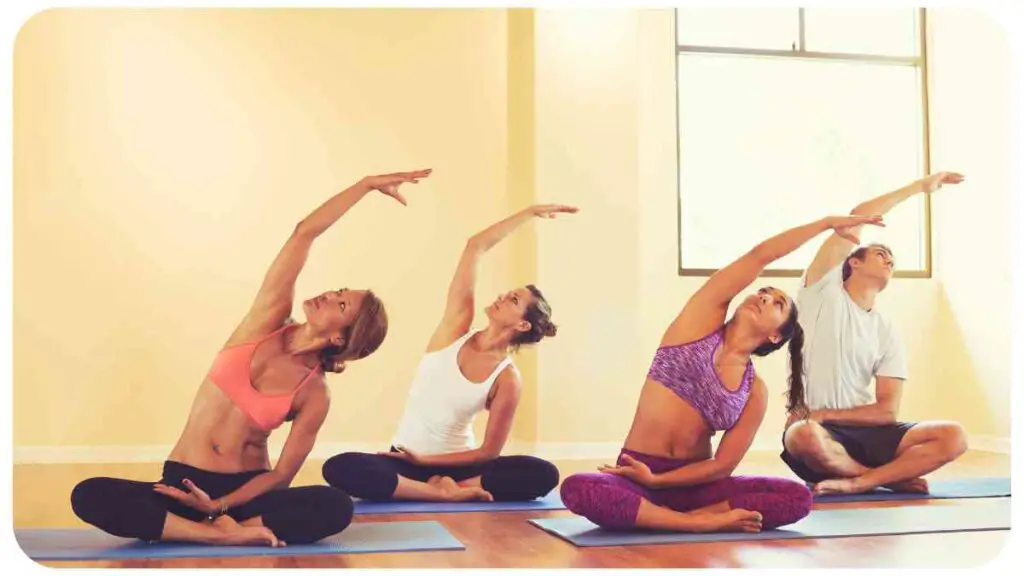
Over time, various styles and branches of Yoga have emerged, each catering to different needs and preferences. Here, we explore a few popular styles:
Table: Different Styles of Yoga
| Style | Key Features |
| Hatha Yoga | Emphasizes physical postures (asanas) and breath control (pranayama), suitable for beginners |
| Ashtanga Yoga | Dynamic and rigorous practice with predetermined sequences, synchronizing breath and movement |
| Vinyasa Yoga | Flowing sequences that link breath and movement, creating a more dynamic and energetic practice |
| Iyengar Yoga | Precise alignment and use of props to facilitate proper posture and enhance body awareness |
| Kundalini Yoga | Focuses on awakening the dormant spiritual energy within, employing kriyas, mantras, and mudras |
| Restorative Yoga | Gentle practice that promotes relaxation, using props for support and longer hold times |
Benefits of Practicing Yoga
The practice of Yoga offers numerous benefits to both the body and mind. By fostering a harmonious connection between the two, Yoga cultivates overall well-being and inner peace.
Table: Health Benefits of Yoga
| Benefit | Description |
| Improved Flexibility | Regular practice enhances joint mobility and stretches muscles, leading to increased flexibility |
| Increased Strength | Holding yoga poses builds strength in various muscle groups, contributing to overall body toning |
| Stress Reduction | Mindful breathing and relaxation techniques help alleviate stress, anxiety, and promote mental tranquility |
| Improved Posture | Correct alignment during yoga postures improves posture and reduces strain on the spine and muscles |
| Enhanced Focus | Concentration practices in Yoga improve mental clarity, focus, and bring a sense of calm to the mind |
| Better Sleep | Relaxation techniques in Yoga can ease insomnia and promote restful sleep |
| Increased Mindfulness | Through self-reflection and meditation, Yoga nurtures a deeper connection with oneself and the present moment |
Tips for Starting Your Yoga Journey
Embarking on a Yoga journey can be both exciting and overwhelming. Here are a few tips to help you get started:
Table: Tips for Beginners Starting Yoga
| Tip | Description |
| Find a Qualified Teacher | Seek guidance from a certified Yoga instructor who can support your practice and ensure proper alignment |
| Start with Beginner-Friendly Classes | Beginner classes offer a slower pace, detailed instructions, and modifications for different fitness levels |
| Listen to Your Body | Honor your body’s limits and avoid pushing beyond what feels comfortable and safe |
| Create a Regular Practice Routine | Consistency is key – set aside specific times for practice to establish a routine and see progress |
| Explore Different Styles | Experiment with various Yoga styles to find the one that resonates with you and your goals |
Stay tuned for more insights, anecdotes, and practical advice on your Yoga journey as we explore the myths, equipment, poses, breathing techniques, and deeper aspects of this ancient practice.
Yoga has the potential to create profound shifts in our lives, empowering us to embrace spirituality. Explore the spiritual power of yoga and witness its life-changing effects.
Common Myths About Yoga
As Yoga has gained popularity, several misconceptions and myths have circulated. It’s important to dispel these myths to truly embrace Yoga as a holistic practice.
Table: Common Myths About Yoga
| Myth | Reality |
| Yoga is only for the flexible | Yoga is adaptable and can be modified for individuals of all fitness levels. The practice itself helps improve flexibility over time. |
| Yoga is only for young and fit people | Yoga is for everyone, regardless of age, fitness level, or body type. There are gentle and modified variations for those with physical limitations. |
| You have to be spiritual or religious to practice Yoga | Yoga is a personal journey and can be practiced as a physical exercise or as a spiritual path, depending on individual preferences and beliefs. |
| Yoga is just stretching | While Yoga does involve stretching, it encompasses much more, including breath control, meditation, and promoting overall physical and mental well-being. |
| You need expensive equipment or a fancy studio to practice Yoga | Yoga can be practiced anywhere, with minimal equipment. A yoga mat and comfortable clothing are sufficient to begin your practice. |
| You have to be calm and serene all the time to practice Yoga | Yoga teaches techniques to calm the mind, but it’s okay to experience a range of emotions during practice. Yoga helps cultivate awareness and acceptance. |
Yoga Equipment and Accessories
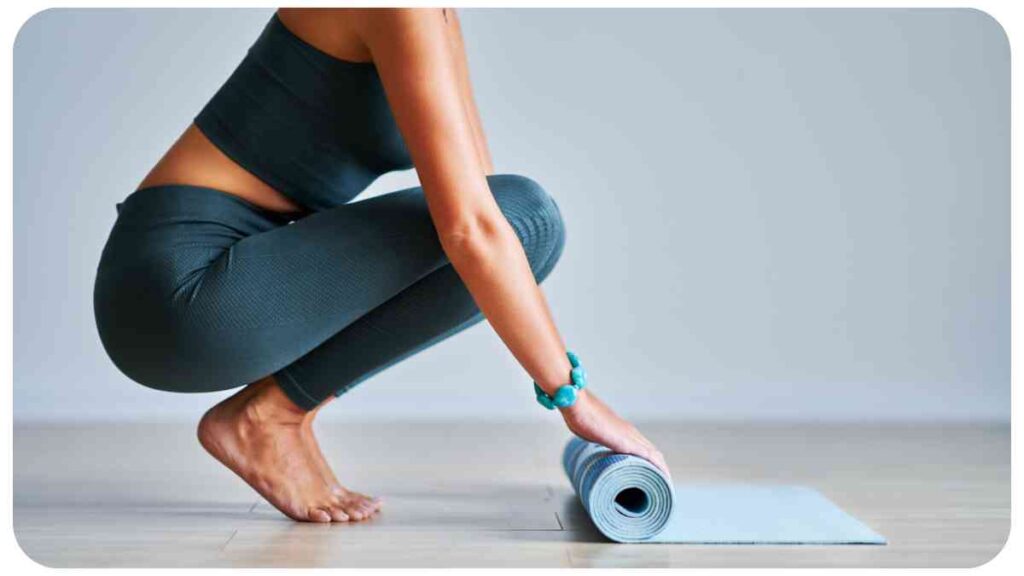
While Yoga doesn’t require complex equipment, a few tools and accessories can enhance your practice and create a more comfortable environment.
Table: Essential Yoga Equipment and Accessories
| Equipment/Accessory | Description |
| Yoga Mat | Provides cushioning and traction for asanas and serves as a personal space for practice |
| Yoga Blocks | Help modify poses, provide support, and assist in achieving proper alignment |
| Yoga Strap | Aids in stretching and deepening certain poses, particularly those that require flexibility or where hands cannot reach |
| Bolster | Cushions used for restorative poses, providing support and allowing muscles to relax deeply |
| Meditation Cushion | Helps maintain proper posture and comfort during meditation practice |
| Blanket | Offers warmth and support during relaxation or restorative poses |
| Yoga Clothing | Comfortable, stretchable, and breathable attire that allows for freedom of movement |
| Water Bottle | Hydration is essential during practice; having a reusable water bottle ensures you stay hydrated and sustainable on your journey |
Yoga Poses and Asanas
The physical aspect of Yoga is embodied through asanas, or yoga poses. Embracing a wide range of postures, asanas promote strength, flexibility, balance, and body-awareness.
Connecting with our higher selves is a fundamental aspect of yoga, allowing us to tap into deeper dimensions of our being. Experience the transformative journey with the spiritual benefits of yoga and nurture your spiritual growth.
Table: Beginner-Friendly Yoga Poses
| Pose | Benefits |
| Mountain Pose | Improves posture and increases body awareness |
| Downward Facing Dog | Stretches the entire body, strengthens arms and legs, and improves blood circulation |
| Warrior I | Strengthens legs, opens the chest, and provides a sense of grounding and empowerment |
| Child’s Pose | Promotes relaxation, releases tension in the back, and calms the mind |
| Tree Pose | Enhances balance, focus, and concentration while strengthening the legs and core |
Remember to practice with awareness, respect your body’s limitations, and gradually progress as you become more comfortable with each pose.
Breathing Techniques in Yoga
Central to the practice of Yoga is pranayama, the art of breath control. Various breathing techniques help regulate the flow of prana (life force energy) in the body, promoting physical, mental, and spiritual well-being.
Table: Common Pranayama Techniques
| Technique | Description |
| Ujjayi Breath | Deep, audible breathing through the nose, creating a gentle constriction in the throat, generating a soothing and energizing effect |
| Nadi Shodhana | Alternate Nostril Breathing – Balances the flow of energy between the left and right nostrils, promoting mental clarity and calmness |
| Kapalabhati | Rapid, forceful exhalations followed by passive inhalations to cleanse and energize the body and mind |
| Bhramari | Bee Breath – Humming sound produced while exhaling, helping to release tension, reduce anxiety, and induce a state of calm |
| Sitali | Cooling Breath – Inhaling through a curled tongue or pursed lips, bringing a cooling and soothing effect to the body and mind |
Meditation and Mindfulness in Yoga
Meditation is an essential aspect of Yoga, serving as a means to cultivate mindfulness, focus, and inner peace. By training the mind to observe thoughts without attachment, meditation allows us to delve deeper into self-awareness and explore the realms of consciousness.
Table: Meditation Techniques in Yoga
| Technique | Description |
| Mindfulness Meditation | Focusing attention on the present moment, observing thoughts, sensations, and emotions with non-judgmental awareness |
| Loving-Kindness Meditation | Cultivating feelings of love, kindness, and compassion towards oneself and others |
| Transcendental Meditation | Utilizing personalized, silently repeated mantras to reach a state of deep relaxation and expanded awareness |
| Guided Visualization | Following verbal guidance to create vivid mental images, promoting relaxation, and manifesting desired outcomes |
Yoga Retreats and Workshops
For a deeper immersion into the practice of Yoga, many individuals choose to attend retreats or workshops. These provide an opportunity to learn from experienced teachers, connect with like-minded people, and experience a dedicated time for self-reflection and transformation.
Elevate your spiritual journey by combining yoga with meditation, creating a path to enlightenment. Embrace the perfect synergy of yoga and meditation to embark on a profound and transformative inner exploration.
Table: Benefits of Yoga Retreats and Workshops
| Benefit | Description |
| In-depth Learning | Retreats and workshops offer a more comprehensive exploration of Yoga, philosophy, and related practices |
| Intensive Practice | Dedicated time for Yoga sessions allows for focused and extended practice, deepening understanding and experiencing noticeable progress |
| Camaraderie and Support | Connect with a community of fellow practitioners, sharing experiences, guidance, and encouragement on the Yoga journey |
| Refreshing Change of Environment | Retreats often take place in serene and natural settings, providing a break from daily routines and offering a renewed perspective |
| Deep Rest and Self-Care | Retreats prioritize self-care, offering relaxation, healthy meals, and time for reflection, rejuvenation, and self-discovery |
| Inner Transformation | Immersion in a retreat or workshop can lead to profound personal growth, self-realization, and the development of new perspectives and goals |
Conclusion
Yoga’s rich history, diverse styles, and transformative benefits make it a deeply meaningful practice for millions of people worldwide. As you continue your journey, remember that Yoga is a holistic path that encompasses physical, mental, and spiritual well-being.
Embrace the ancient wisdom, listen to your body, and patiently explore the depths of this ancient art. May your Yoga practice bring you strength, peace, and a deep sense of unity within yourself and the world around you.
Further Reading
- Explore the Ancient Roots of Yoga: Delve into the origins of Yoga and its historical significance through an interactive story provided by Google Arts & Culture.
- History of Yoga: Discover a comprehensive overview of Yoga’s history, including its development, ancient texts, and influential figures, on Yoga Basics.
- The History of Yoga: From Ancient India to Modern Western Society: Gain insights into Yoga’s journey from ancient India to its current popularity in the Western world, exploring its philosophy, evolution, and cultural impact.
FAQs
What is Yoga?
Yoga is a holistic practice that combines physical postures, breath control, meditation, and ethical principles to cultivate physical, mental, and spiritual well-being.
Can beginners practice Yoga?
Absolutely! Yoga is accessible to individuals of all fitness levels, including beginners. There are various styles and modifications available to accommodate different needs and abilities.
How often should I practice Yoga?
The frequency of practice depends on personal preference and schedule. Starting with a few sessions per week and gradually increasing can be beneficial. Consistency is key to experiencing the benefits over time.
Do I need to be flexible to do Yoga?
No, flexibility is not a prerequisite for Yoga. Regular practice improves flexibility over time. Yoga focuses on honoring and working with your body’s unique capabilities and limitations.
How do I choose the right style of Yoga for me?
Choosing the right style of Yoga depends on your goals, preferences, and physical condition. Exploring different styles, attending classes, and seeking guidance from a qualified teacher can help you find the one that suits you best.

Hello, my name is Hellen James! I am a yoga teacher and writer who loves to share information about how you can achieve a more fulfilling life. I have been practicing mindfulness, yoga, and meditation for over 10 years. My passion for these practices has led me to teach them to others.

